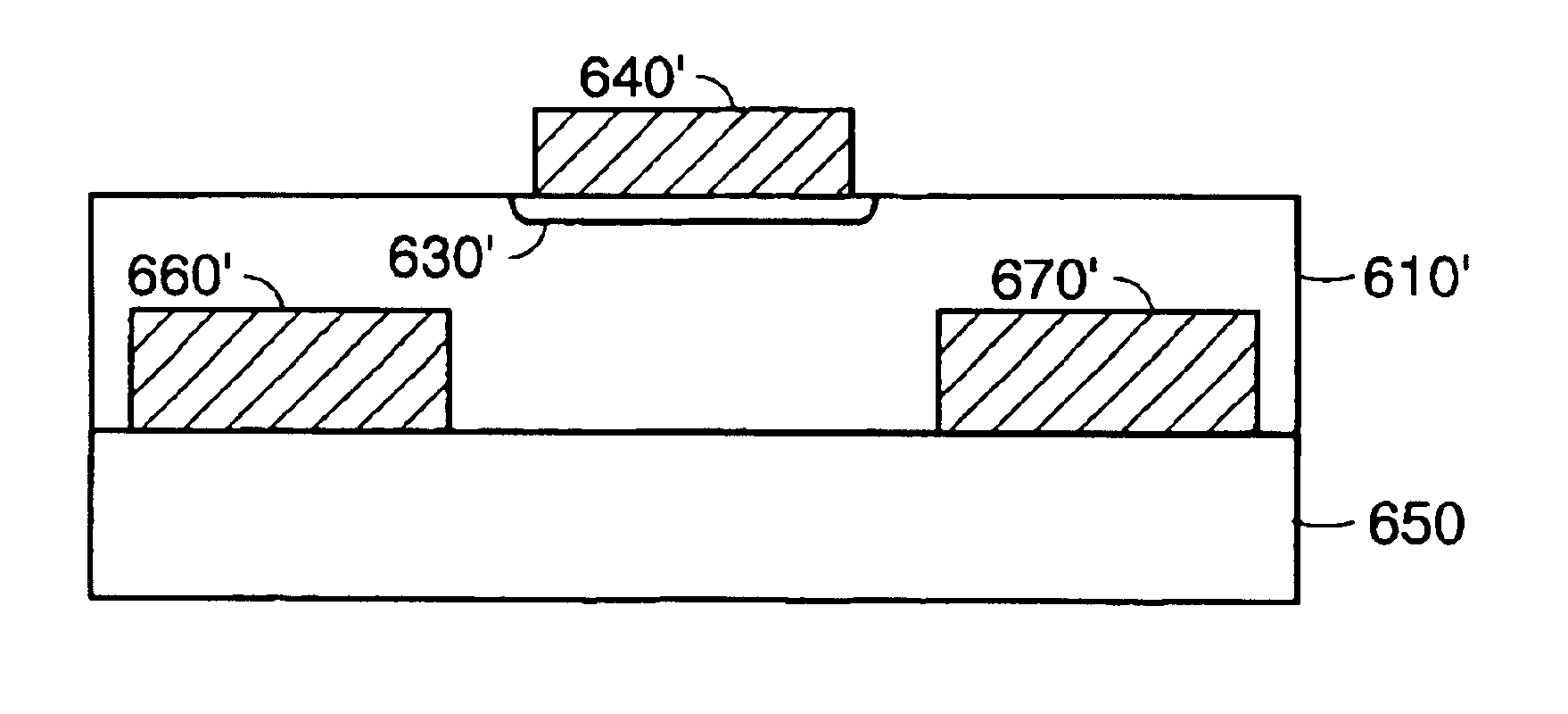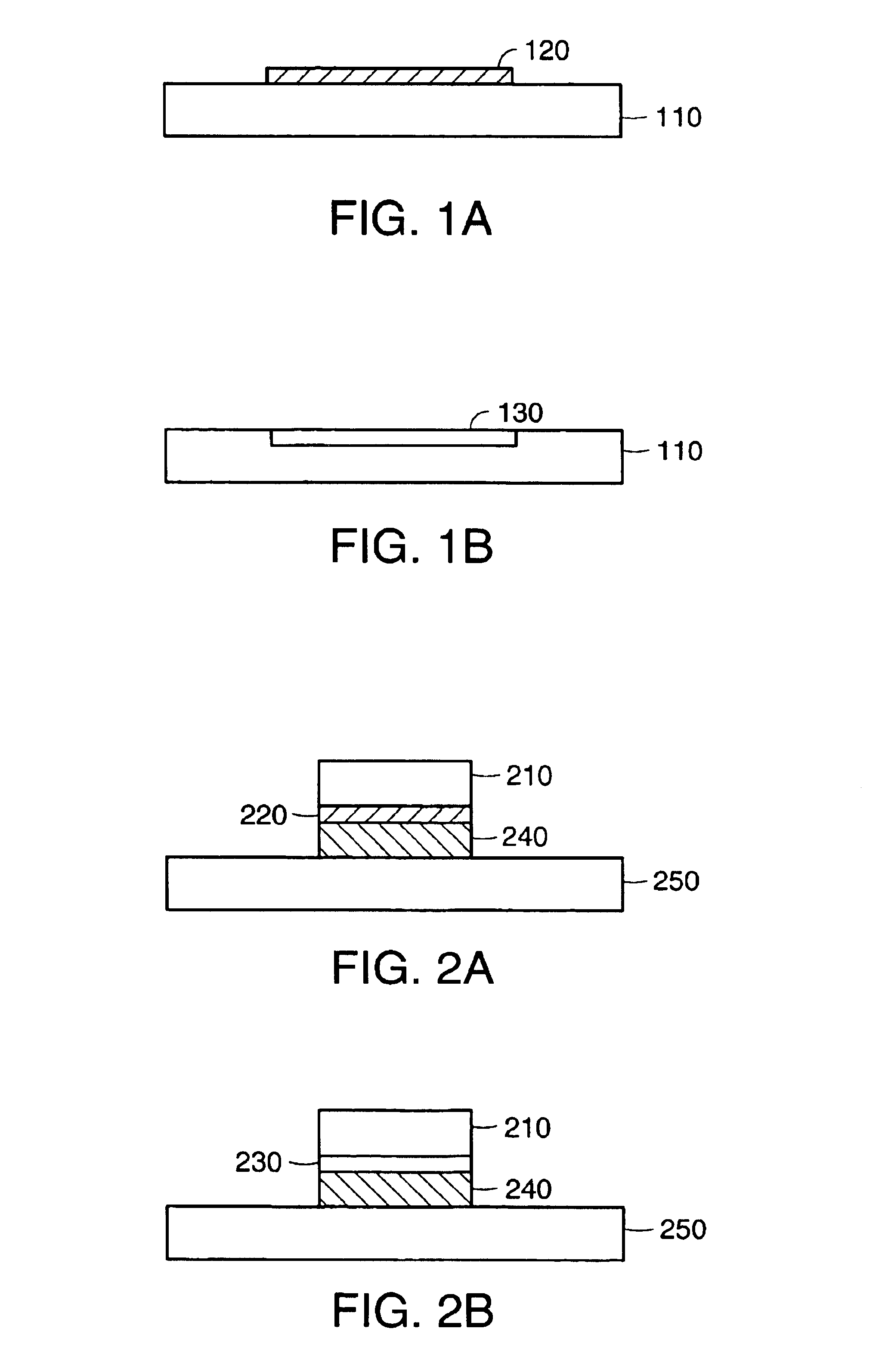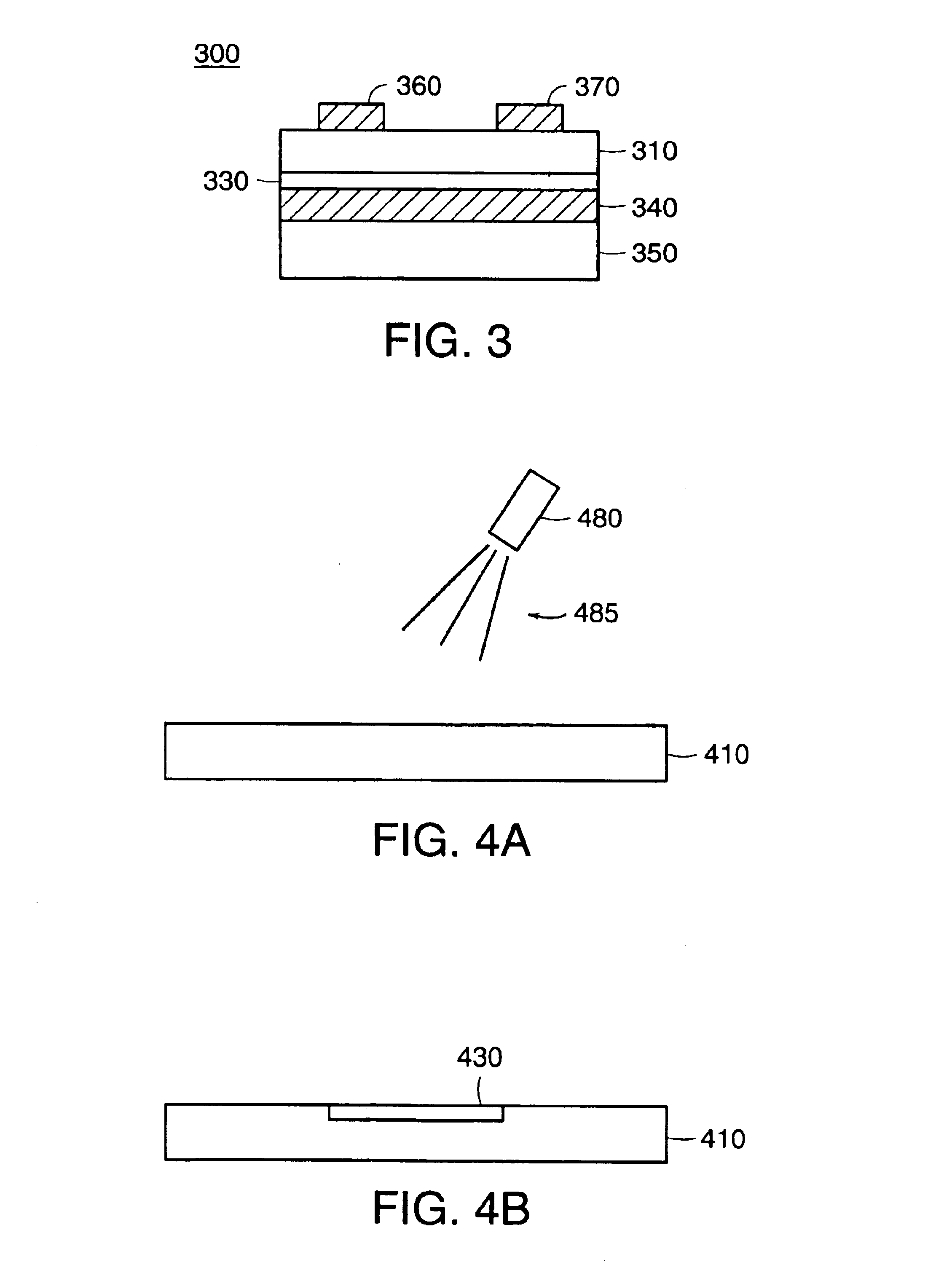Reactive formation of dielectric layers and protection of organic layers in organic semiconductor device fabrication
a technology of organic semiconductor devices and dielectric layers, which is applied in the field of reactive formation of dielectric layers and organic semiconductor device protection in organic semiconductor device fabrication, can solve the problems of ink materials, damage to organic dielectrics, and damage to organic layers or their interfaces with other layers, and achieve the effect of using damaging solvents
- Summary
- Abstract
- Description
- Claims
- Application Information
AI Technical Summary
Benefits of technology
Problems solved by technology
Method used
Image
Examples
Embodiment Construction
The invention relates to the manufacture of displays that utilize arrays of organic semiconductor based transistors. The invention is of particular use in the production of displays with an electrophoretic display medium and mitigates the problem of solvent attack of organic layers during manufacture. Formation of dielectric layers will first be described, followed by a description of protection of organic layers during manufacture.
I. Method of Forming Dielectric Layers in Organic Semiconductor Devices
With reference to FIG. 1a, an embodiment is shown in which an organic semiconductor layer 110 is deposited, followed by deposition of a reactive species 120. The reactive species 120 can be deposited uniformly, or patterned onto desired areas of the organic semiconductor. The reactive species 120 is selected from a variety of materials that are reactive with the organic semiconductor. The selected material will depend on the type of desired reaction, for example, reduction, oxidation, ...
PUM
| Property | Measurement | Unit |
|---|---|---|
| Dielectric polarization enthalpy | aaaaa | aaaaa |
Abstract
Description
Claims
Application Information
 Login to View More
Login to View More - R&D
- Intellectual Property
- Life Sciences
- Materials
- Tech Scout
- Unparalleled Data Quality
- Higher Quality Content
- 60% Fewer Hallucinations
Browse by: Latest US Patents, China's latest patents, Technical Efficacy Thesaurus, Application Domain, Technology Topic, Popular Technical Reports.
© 2025 PatSnap. All rights reserved.Legal|Privacy policy|Modern Slavery Act Transparency Statement|Sitemap|About US| Contact US: help@patsnap.com



